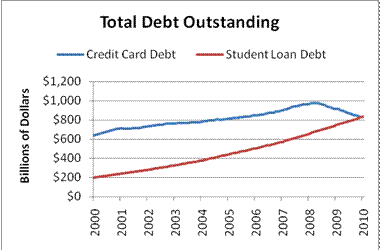In recent months, organizations dealing with student debt have seen not a gradually rising tide of public consciousness but a sudden, overwhelming wave.
As recently as 2005, when officials at the Institute for College Access and Success were starting the Project on Student Debt, they weren’t sure how to refer to the problem they were studying: "college debt"? "Student loan debt'? “It was still something that a lot of people experienced personally, but it hadn’t been recognized as the huge trend that it was,” says Lauren Asher, the institute’s president. Seven years later, the group is overwhelmed with calls from reporters writing about student debt -- in part, Asher believes, because of the group's name.
What happened? First, a series of big, eye-catching statistics. Total student debt will pass $1 trillion soon, or surpassed that mark months ago or just last week, depending on which analysis you choose. (The Federal Reserve in March said total outstanding student loan debt stood at $870 billion. The Consumer Financial Protection Bureau believes the debt surpassed $1 trillion several months ago. The Occupy movement picked April 25 to commemorate the $1 trillion mark with marches and protests.) Americans now owe more on student loans than they do on credit cards.
From FastWeb:
The surge of social media has drastically reshaped the politics of 2012. The group MoveOn.org plans a campaign to put the college student debt issue on every Facebook page of every college student in the U.S., raising the question of whether social media will be same galvanizing tool it was in 2008 in getting out the youth vote for Obama?
There is no question that the Obama reelection strategy is to "narrowcast" themes to very specific constituencies, including women, Hispanic voters, and the youth, either college educated or those just entering college. Narrowcasting a campaign is most effectively done through social media because you can target and tweak the message.
Even more than in 2008, Twitter, Facebook, texts, and other tools will be the central core of Obama 2012. The most powerful way to trigger this kind of 'authentic campaigning' is for the Obama and surrogates to visit campuses and create "Tweetable moments" from which students will initiate Facebook/Twitter experiences and images.
